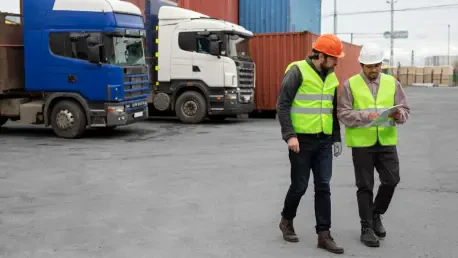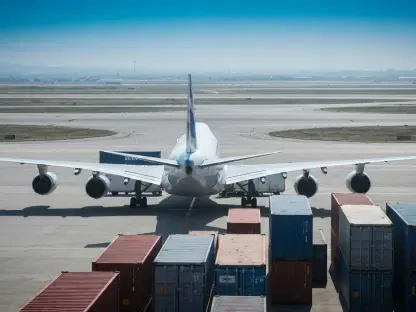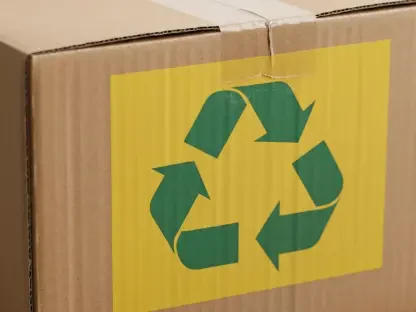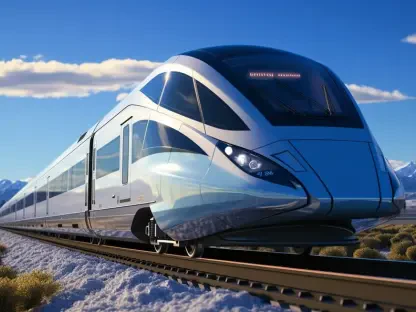I’m thrilled to sit down with Rohit Laila, a seasoned veteran in the logistics industry with decades of experience in supply chain management and delivery systems. Rohit’s deep knowledge and passion for technology and innovation in transportation make him the perfect person to help us unpack the complex and often contentious issues surrounding port automation, federal regulations, and the ongoing friction between state and federal policies in California. Today, we’ll dive into the implications of recent decisions on port operations, trucking rules, and the broader clash between local and national priorities, exploring how these dynamics could shape the future of the industry.
How do you interpret Governor Newsom’s decision to veto the bill that aimed to block public funding for automated equipment at California’s ports?
I think Governor Newsom’s veto reflects a strategic choice to prioritize long-term environmental and efficiency goals over immediate labor concerns. By rejecting the bill, he’s signaling that California is committed to modernizing its ports, even if it means navigating tough conversations about automation. His reasoning seems to hinge on not undermining the South Coast Air Quality Management District’s ability to regulate emissions, which is a critical piece of the state’s broader push for sustainability.
What role do you believe the focus on air quality and efficiency played in shaping this veto?
It played a significant role. California has some of the strictest environmental standards in the country, and ports are major contributors to air pollution. By prioritizing the authority of the air quality district, Newsom is likely trying to ensure that cleaner technologies, which often come with automation, aren’t stalled by legislative roadblocks. It’s a forward-looking stance, but it does put him at odds with labor groups who see automation as a direct threat to jobs.
What could this veto mean for longshore workers who are worried about losing their jobs to automation?
For longshore workers, this veto is a setback. It opens the door for more automated systems at ports, which could reduce the need for human labor over time. While it’s not an immediate job-killer, it signals a shift in policy that favors technology over traditional roles. Workers and unions will likely push back harder, possibly through strikes or further legislation, to protect their livelihoods, but they’re fighting an uphill battle against the tide of innovation.
Do you think the emphasis on cleaner, more efficient port operations justifies the potential impact on jobs?
That’s a tough call. On one hand, cleaner ports are essential for public health and meeting climate goals—California can’t afford to lag on that. On the other, job losses hit real people and communities hard. I believe there’s a middle ground where innovation can be paired with retraining programs or phased transitions for workers, but that requires serious investment and cooperation between the state, industry, and unions—something we haven’t seen enough of yet.
Shifting gears to federal actions, what’s your perspective on the U.S. Department of Transportation withholding $40 million in highway funds from California?
This move by the DOT is a clear power play. Withholding $40 million sends a strong message that the federal government isn’t happy with California’s approach to enforcing English-language proficiency rules for truck drivers. It’s less about the money itself and more about forcing compliance with national standards. But it also escalates tensions at a time when state-federal relations are already strained.
Do you think the DOT’s argument about California’s lax enforcement of language proficiency rules holds water?
There’s some validity to the DOT’s concern. Federal rules exist to ensure safety—drivers need to read signs and communicate with authorities to prevent accidents. If California isn’t aligning with those standards, it could create risks. However, the state’s counterargument about low crash rates suggests their approach might still be effective. It’s a gray area, and I suspect this is as much about politics as it is about safety.
How do you view California’s claim that their standards are equivalent to federal ones and that their crash rates are among the lowest in the nation?
California’s argument has merit. If their crash rates for commercial drivers are indeed among the lowest, it’s hard to argue that their system is failing. They’re essentially saying, “Our way works, even if it’s not identical to yours.” That’s a strong position, but it doesn’t address the federal concern about uniformity across states. Safety isn’t just about outcomes—it’s about consistent rules everyone can rely on.
Could this funding cut influence California to adjust its trucking regulations, or do you expect the state to hold firm?
I think California will hold firm, at least for now. The state has a history of pushing back against federal overreach, especially under the current administration. Losing $40 million stings, but it’s not a crippling blow. They might make small tweaks to appease the DOT, but I don’t see a full overhaul of their trucking rules unless the pressure ramps up significantly.
Looking at the bigger picture, how would you characterize the ongoing friction between Governor Newsom and the federal administration in light of these recent events?
It’s a classic state-versus-federal showdown. Newsom has positioned California as a progressive counterweight to federal policies he sees as regressive or punitive. These disputes over ports and trucking rules are just the latest examples of a deeper ideological divide. It’s not just about policy—it’s about who gets to set the agenda for transportation and labor in the state.
Why do you think California often takes such a defiant stance against federal directives?
California sees itself as a leader, not a follower. With its massive economy and unique challenges—like port traffic and air quality—the state often feels federal rules don’t fit its needs. Plus, there’s a political angle: standing up to Washington resonates with a lot of Californians who want their state to chart its own course, especially on issues like environment and labor.
On the other hand, do you believe the federal administration has a reasonable case for claiming California is sidestepping national standards?
Absolutely. National standards exist for a reason—to create a baseline of safety and consistency across the country. If every state starts doing its own thing, you end up with a patchwork system that can confuse industries like trucking, which operate across borders. The administration’s frustration is understandable, even if their methods, like funding cuts, feel heavy-handed.
Focusing on the industry itself, how do you see the debate over automation shaping the future of West Coast ports?
Automation is inevitable at West Coast ports—it’s just a question of pace and scale. The debate will likely delay full implementation, as labor unions fight for protections, but the pressure to modernize for efficiency and environmental reasons is too strong to ignore. In the next decade, I expect a hybrid model where automation handles repetitive tasks, but human workers still play a key role in oversight and complex operations.
What are the toughest challenges in balancing technological progress at ports with the need to safeguard jobs?
The biggest challenge is timing—how do you introduce tech without displacing workers overnight? There’s also the issue of trust; workers feel like they’re being phased out without a clear safety net. On the flip side, port operators and policymakers are under pressure to cut costs and emissions. Bridging that gap requires creative solutions like job retraining, gradual rollouts, and transparent dialogue—none of which are easy to pull off.
In the trucking industry, how might stricter enforcement of English-language proficiency rules affect drivers and the sector as a whole?
Stricter enforcement could create real hurdles for drivers who aren’t fluent in English, potentially sidelining a chunk of the workforce. Many drivers are immigrants who play a vital role in the industry, and this could exacerbate labor shortages. For the sector, it might mean higher costs as companies scramble to recruit or train compliant drivers. It’s a safety issue, sure, but it’s also a practical one that could disrupt supply chains if not handled carefully.
What is your forecast for the future of transportation policy conflicts between California and the federal government?
I expect these conflicts to persist as long as there’s a fundamental disconnect on priorities. California will keep pushing for progressive policies on environment and labor, while the federal government—depending on who’s in charge—may continue to demand uniformity or use financial leverage to enforce compliance. The transportation industry will be caught in the middle, navigating a tug-of-war that could slow innovation or force uneven regulations. I think resolution will only come through compromise or a shift in political winds at the national level.









